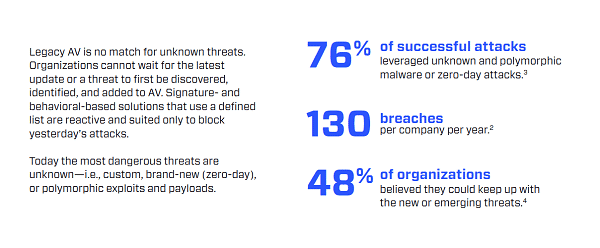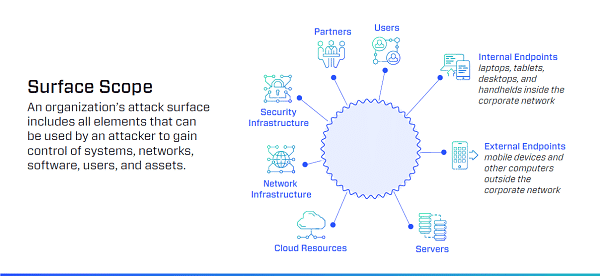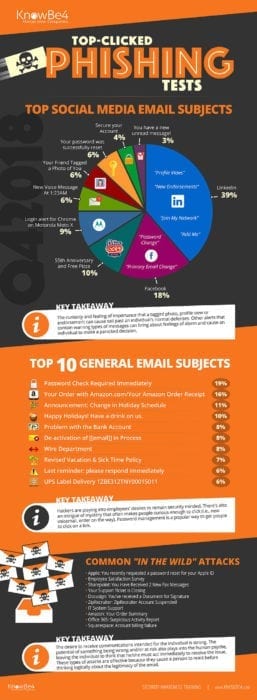Why Do I Need an EDR Solution?
Is an EDR Solution required for your cybersecurity strategy? Keep reading to see the benefits an EDR could provide as well as the potential benefit of outsourcing.
What is EDR?
EDR or Endpoint Detection & Response is rather defined as solutions to store and record endpoint system-level behaviors, block malicious activities, provide contextual information, make use of different types of data analytics to identify and detect unwanted suspicious system behavior and offer remedial measures to restore all affected systems.
Today’s organizations are quite aware of the fact that determined adversaries wait patiently to evade their defenses and gain better access to networks and systems. This will only cause ‘silent failure’ of the standard security solutions as they are unable to detect such intrusions or alert you. Lack of visibility is often cited to be the major culprit for this failure. This challenge, however, can be addressed properly by EDR.
Endpoint detection and response, first coined by Anton Chuvakin, is still a new technology that hasn’t quite reached maturity yet. However, it can be best described as the endpoint security counterpart to SIEM: a solution that focuses on threat detection, investigation, and mitigation of enterprise endpoints and networks.
Endpoint detection and response’s main focus is improving IT security teams’ visibility into relevant endpoints and providing continuous monitoring. But that is the tip of the iceberg of what EDR includes.
Many EDR solutions provide:
+ Endpoint data aggregation
+ Endpoint data correlation
+ Centralized reporting and alerting
+ Behavioral analysis similar to UEBA
+ Centralized data search
+ Forensic investigations
+ Whitelisting and blacklisting for users and entities
EDR Security: Know the key aspects
Effective EDR includesncludess one that includes the capabilities given below:
- Prevention of malicious activities
- The threat to data exploration or hunting
- Detection of suspicious activities
- Alert suspicious activity or triage validation
- Incident data investigation and search
Read more about Managed EDR Security.
What is Required in an EDR Solution?
To know what solution is to be derived for the organization, it is crucial to understand EDR’s key aspects and why they are vital! It is essential to identify EDR software that can provide the ultimate protection level without requiring much investment or effort. It should also enable value to the security team, but without draining precious resources.
Some EDR solution key aspects to consider:
- Threat Database: Telemetry will be required for effective EDR gathered from endpoints and rich in context. Only then will it be possible to use different analytic techniques to mine for attack signs.
- Visibility: Adversary activities can be viewed with real-time visibility on all endpoints, even if the environment is breached, thereby stopping them instantly.
- Intelligence and insight: EDR with threat intelligence integration can help provide the necessary context, which also includes details on the attacking adversary or other vital information about the attack.
- Behavioral protection: ‘Silent failure’ is caused if only IOCs (Indicators of compromise) or signature-based methods are only relied upon, thus causing the occurrence of data breaches. Behavioral approaches will be essential for effective endpoint detection to search for IOAs (indicators of attack). This way, you will be alerted in case, of suspicious activities.
- Cloud-based solution: Zero impacts can be ensured on endpoints with Cloud-based EDR solutions. It also assures capabilities like investigation, analysis and search are done in real time and accurately.
- Quick response: EDR which can enable accurate and quick response to incidents can help prevent an attack before it becomes a major breach. This allows the organization to safeguard itself and get back to normalcy quickly.
Read more: Traditional Antivirus vs. EDR
Why is an EDR Solution Vital?
It is without a doubt that with sufficient resources, time and motivation, youhttps://cybriant.com/antivirus-vs-edr/r adversaries are likely to devise ways and means to tackle your defenses, irrespective of how advanced it is. Given below are a few compelling reasons why EDR is to be made part of the endpoint security strategy.
- Adversaries can be within the network for weeks. They may also return at will: Silent failure will only cause free movement by attackers in your environment. They might create back doors to allow returning at will. It is only a third party that might identify the breach like your suppliers, customers, or law enforcement.
- Prevention alone will not assure 100% protection: Your organization is likely to remain ignorant due to the existing endpoint security solution. The attackers will only take full advantage of this and navigate within the network freely.
- There will be necessary access to proper and actionable intelligence to derive the response to such incidents: Besides lacking in visibility, organizations might not know what is exactly happening on the endpoints, not be in a position to record things relevant to security, to store and later recall quickly this valuable information as and when required.
- Organizations lack the visibility required to monitor effectively endpoints: If a breach is discovered, then you are likely to spend a good amount of time trying to identify what exactly caused the situation, what exactly happened, and how it is to be fixed. This is because of the lack of visibility. But the attacker will only return in a few days before appropriate remedial measures are taken.
- Remediation can be expensive and protracted: Organizations need to have the right capabilities. Otherwise, they will only spend weeks or even months trying to identify the type of actions to be taken. This might mean reimaging machines that could disrupt the degraded productivity, and business processes, thus leading to serious financial losses.
- Having data is part of the solution: Adequate resources will be necessary for the security teams to analyze and derive full advantage from it, even if there is available data. It is for this reason, that security teams have become aware of the fact that even after deploying event collection products like the SIEM, they tend to face complex data issues. There also crops our various types of challenges like what to identify, scalability, and speed, including other problems, before addressing the primary objectives.
Conclusion
The EDR market is growing at a tremendous pace over the last couple of years. According to industry analysts, EDR is only expected to grow further at 45% in the coming year 2020, when compared to the 7 percent growth of the cybersecurity market. Hackers these days are gaining easy access to more advanced and sophisticated tools, it is without a doubt that cyberattacks are only increasing with time. Governments and businesses, across the globe, have realized the potentiality and significance of EDR and have started to stop this modern and crucial technology.
The fact is that cyberattacks on endpoints only are found to be increasing rapidly in complexity and numbers. With digitization continuing to transform governments, industries, and businesses, devices in huge numbers are likely to be found online. Presently, only forty million traditional endpoints out of 700+ million are said to have adopted EDR solutions.
Read More: EDR vs. SIEM
Consider Managed EDR
Could a managed EDR solution be right for you?
When you outsource the management of your Endpoint Detection and Response (EDR) to Cybriant, our security analysts can:
- Perform root cause analysis for any blocked threat or any other artifact deemed important found on an endpoint
- Proactively search endpoints for signs of threats commonly referred to as threat hunting
- Take decisive action when a security incident, or potential incident, is identified





 Imagine. You just started a new job as the Global Information Security Director for a large multi-national organization. Your first recommendation – adding an
Imagine. You just started a new job as the Global Information Security Director for a large multi-national organization. Your first recommendation – adding an 